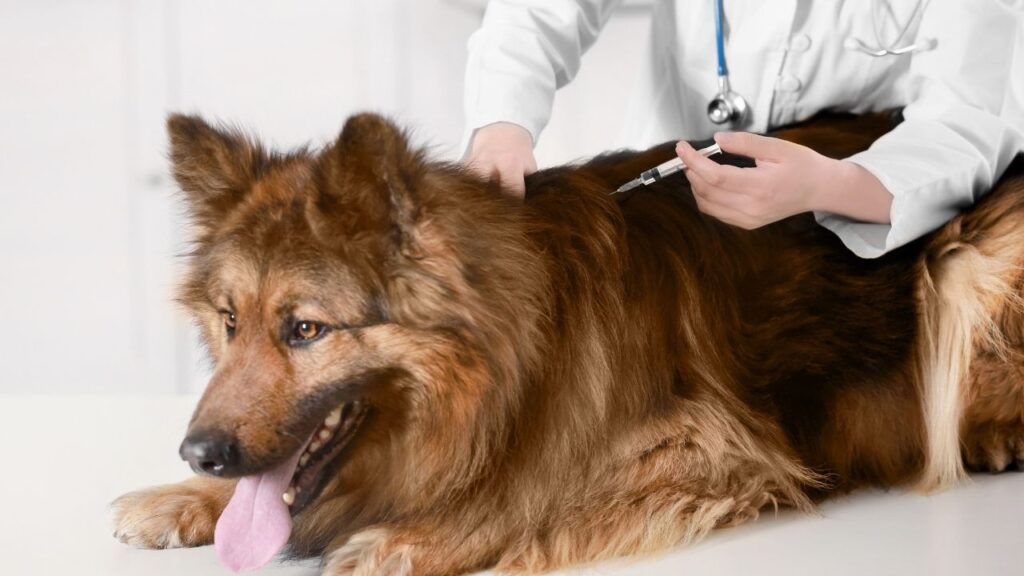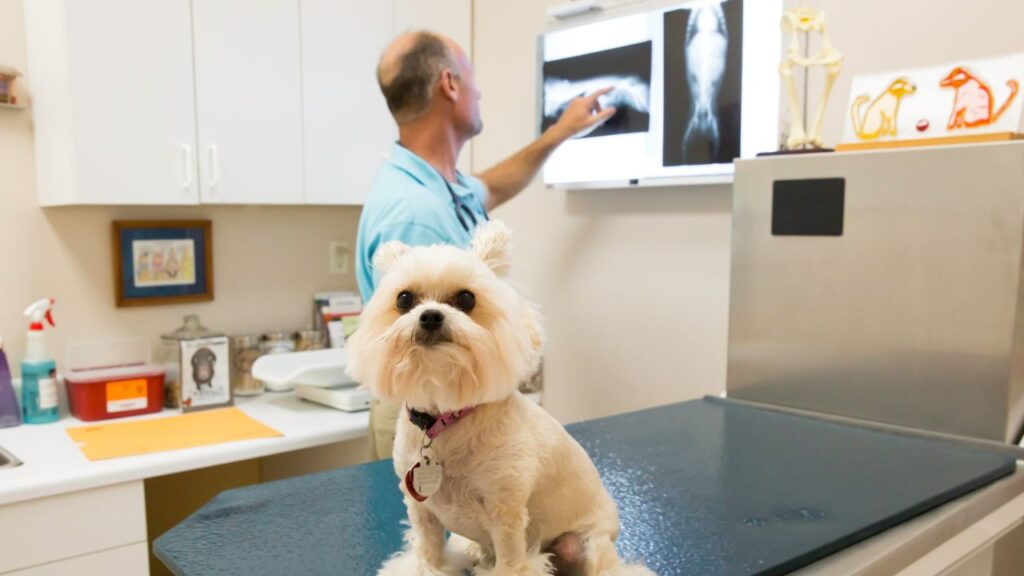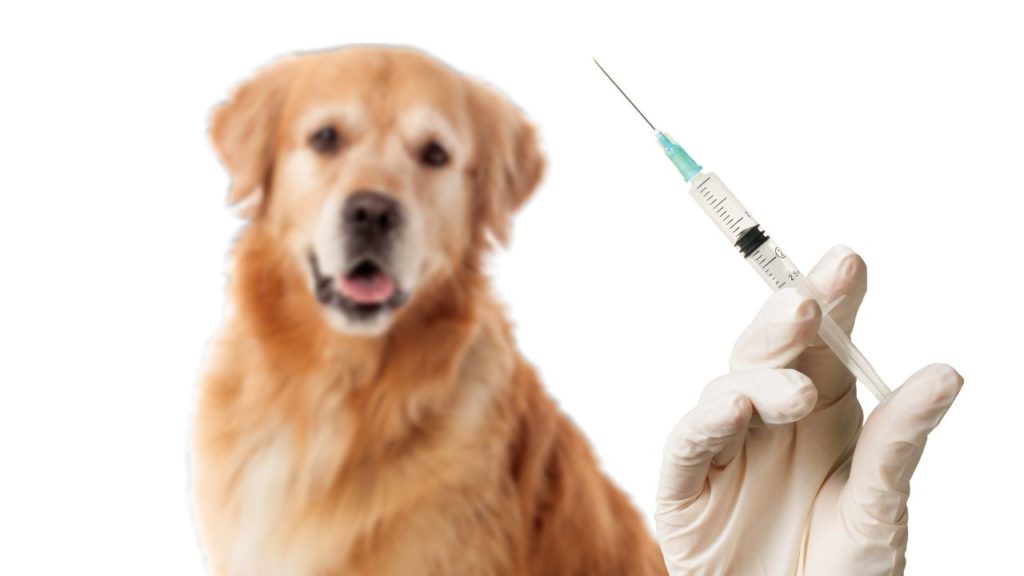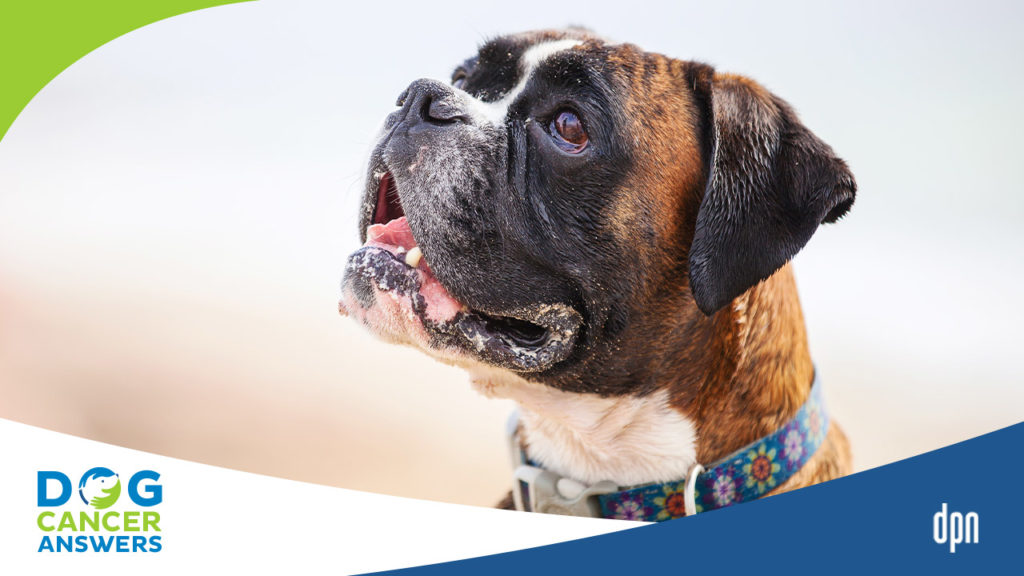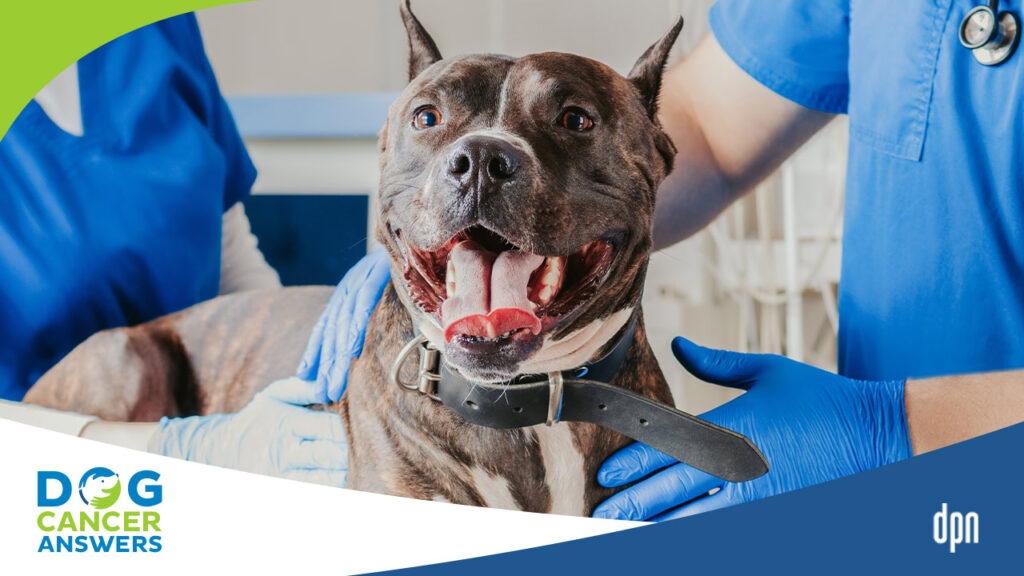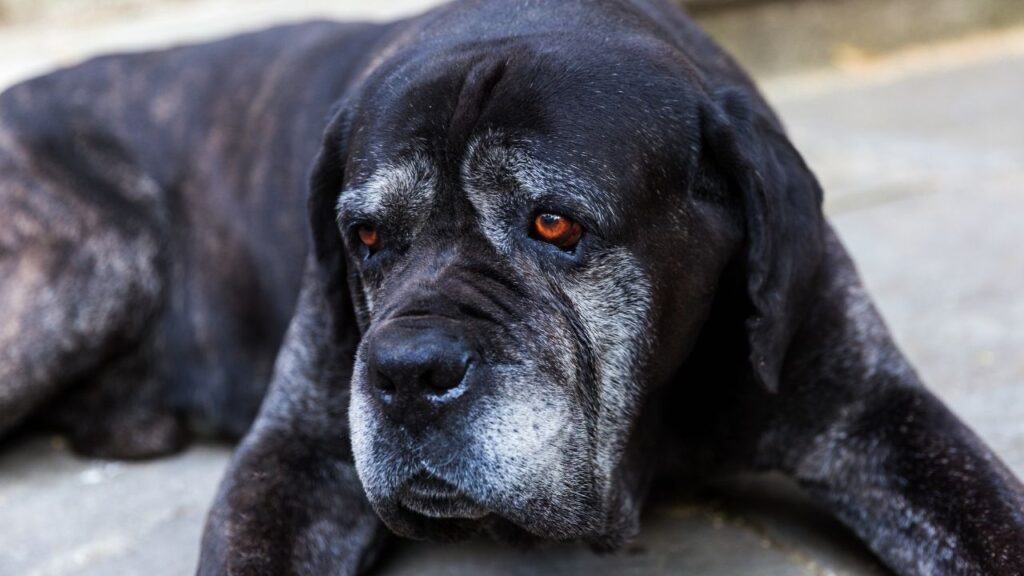Chances are, if you have an older dog, you are familiar with “fatty tumors.” These benign (non-cancerous) growths appear on dogs of all shapes and sizes, especially as they age. The really great news is, they frequently do not cause any pain or pose any health issues for your dog and may not need any treatment at all.
Key Takeaways
- Lipomas are benign, and most do not need to be treated. However, if they grow big enough or are in a location to cause a problem for your dog, many veterinarians will recommend surgical removal.
- We do not know why dogs get lipomas. We suspect various environmental and hereditary factors cause them.
- All shapes and sizes of dogs can get lipomas, but older, overweight dogs are more prone. There are a few breeds that are more likely to get lipomas.
- In most cases, you do not need to worry if your dog has a lipoma. Once your veterinarian has confirmed it is a lipoma, not something more serious, watch it for changes in size, shape, or texture.
- If your dog is overweight, sometimes helping your dog lose weight will help shrink the lipoma naturally. Some supplements may help shrink lipomas, but there are no studies to support this, so always check with your veterinarian first.
- Lipomas are not painful unless they have been injured or infected.
Lipomas in Dogs, Also Known as “Fatty Tumors”
Canine lipomas are benign (non-cancerous) masses made of adipose (fat) cells. Your veterinarian might call a lipoma a “fatty tumor.” Lipomas in dogs typically don’t metastasize (spread) to other body parts.2
Because fat is found in many parts of your dog’s body, lipomas can occur anywhere, including deep inside. However, most lipomas noticed by dog owners occur on the chest, abdomen, and legs, right under the skin, where a layer of fat is normally present.
You may also hear the term “infiltrative lipoma,” what some veterinarians call lipomas that grow in between muscle layers.
Malignant Lipomas (Liposarcomas)
The malignant form of lipoma is called liposarcoma. These types of tumors in dogs are very rare. In general, they will be treated more aggressively and monitored more closely than benign lipomas. The following sections will touch on malignant liposarcomas in dogs when applicable.
What Dogs Are Prone to Lipomas?
Lipomas are more likely to occur in overweight, older dogs.
What Do Lipomas Look Like on Dogs?
Lipomas in dogs typically start as a small, single lump under the skin. The fur and skin over the mass are typically normal in appearance.
Lipomas in dogs can vary in texture. The mass itself is usually soft and squishy and can be gently manipulated. Your dog’s lipoma may be circular, oblong, irregular, or bumpy.
Some lipomas may be firmer due to their attachment to underlying tissues.2
It’s also possible – even likely — that your dog has multiple lipomas, especially as he or she ages. Remember that each of these lipomas is an individual and may develop differently. While some may grow rapidly, others may take years to grow large enough to be concerning.
Because they’re benign, lipomas are not considered cancerous and do not metastasize to other body areas. However, lipomas themselves can grow over time, becoming very large.
Lipomas can become problematic if they:
- Affect or block the blood supply
- Pinch nerves or otherwise cause pain
- Prevent normal movement
These problems are more likely to occur if a lipoma is fast-growing or grows in an inconvenient location on the body, such as the armpits, scrotal area, or head and neck area.
Some lipomas are unnoticeable and stay the same size for many years. Many do not cause symptoms, can be readily diagnosed, and do not require treatment.
However, if you notice your dog’s lipoma is developing an abnormal appearance, has a change in growth pattern or rate, or is causing discomfort, your veterinarian may recommend surgical removal.
Because removing lipomas is rarely an emergency, your veterinarian may suggest waiting until your dog is under anesthesia for another reason to perform the surgery, for example, during a dental cleaning.
Stats and Facts
Because lipomas are not generally dangerous tumors and don’t limit the lifespan of dogs, there isn’t a lot of money or effort spent studying them, so we don’t have scientific literature to consult for hard numbers about lipomas.
However, insurance records can tell us a lot about conditions veterinarians treat. Embrace Pet Insurance claims that the percentage of dogs affected by lipomas is about 16%.2
Middle-aged and older obese female dogs are most predisposed to developing them.2
Causes of Lipomas in Dogs
There is no specific known cause for lipomas in dogs. Most veterinarians believe that a combination of different environmental, hereditary, and genetic factors causes tumors in dogs.
Since lipomas appear to occur in some breeds more than others, at least some genetic link is likely responsible for lipomas in dogs.2
Case studies show anecdotal support for an environmental link to lipoma development. For example, one published paper outlined the growth of 72 lipoma tumors on a dog exposed to mold and mycotoxins in its family home.4
Risk Factors
Although any breed of dog can grow lipomas, they appear to be more common in some breeds:2
- Doberman Pinschers
- Labrador Retrievers
- Cocker Spaniels
- Weimaraner
- Schnauzers
- German Pointers
- Beagles
- Golden Retrievers
Symptoms of Lipomas in Dogs
Many lipomas are noticed at home first. Some are found by the family veterinarian during a routine wellness exam.
You may initially feel or see a small lump under your dog’s skin. If a lipoma has grown large without you noticing at first, you may see some change in your dog’s normal appearance or routine. For example, you may notice your dog’s walk has changed if a lipoma has grown in the armpit area. Or, you may notice your dog licking or chewing a new mass under his skin.
Although lipomas are not typically painful, your dog may show signs of discomfort if he has an injured lipoma.
If you discover a new or changing mass on your dog, you should contact your veterinarian.
Diagnosis of Lipomas in Dogs
While most lipomas in dogs have a distinct look and feel, other tumors can resemble lipomas. It is critical to do at least an FNA and cytology of all lumps, even if they feel like a fatty tumor – they may well be a simple lipoma, but more sinister cancers can look and feel similar.
Veterinarians use several different methods to determine what type of tumor your dog has.
Fine Needle Aspirate
A quick way to check if the mass is truly a lipoma is for your veterinarian to examine a cytology obtained by fine-needle aspirate (FNA).
Though this method is often very reassuring, owners must understand that this method is not perfect. Cytology by fine-needle aspirate (FNA) only examines a small number of cells from the suspected lipoma. In other words, in some rare cases, other tumor cells are hiding within or behind the apparent fatty lipoma cells.2
Veterinary oncologist Brooke Britton explains how a lipoma could have been hiding a mast cell tumor on DOG CANCER ANSWERS.
Ultrasound
Lipomas are often easy to identify with an ultrasound. Common features that can be seen include an oval or irregular shape, a defined capsule, and a consistent thin striped echo pattern throughout the mass.6
Additionally, the ultrasound can help your veterinarian get a more accurate cytology sample by guiding your veterinarian to the center of the apparent lipoma to collect any non-fatty tumor cells that may be present.6
Biopsy
A biopsy (removal of a piece of the tumor) of the tumor is required for a definitive diagnosis.5
Advanced Imaging
Advanced imaging, such as a CT scan, may also be recommended in rare cases.
Prognosis and Staging
Lipomas in dogs are almost always non-cancerous and do not spread to other parts of the body or involve local lymph nodes.2 Because of this, most veterinarians do not stage lipoma tumors in dogs.
The prognosis for a normal length and quality of life for a dog with one or more lipomas is quite good. Lipomas are benign tumors that respond well to surgical treatment and should not be life-limiting for dogs.
Treatment
Because most lipomas don’t cause problems, some veterinarians recommend simply monitoring.
The slow-growing nature of lipomas may mean that you only have to monitor your dog’s lipomas for changes in appearance, texture, and size.2
Taking pictures with your phone and measuring and recording the lump’s size, shape, and firmness at least every six months will help you note any changes.3
If any of the following are seen, report it to your veterinarian:
- Growing very quickly
- Becoming more firm
- Becoming lumpy
- Developing discharge
- Causing your dog pain
- Interfering with your dog’s movement
- Otherwise looking or feeling different (not just bigger)
Some lipomas may stay the same size for years, while others may grow big enough to affect mobility.
The best treatment for lipomas that cause discomfort or other problems for your dog is surgical removal.
Maintaining a Healthy Weight
As lipomas are made of fat cells, maintaining a healthy body condition for your dog helps to control lipoma growth and prevent future lipomas from developing.3
A diet plan is often needed to keep your dog at a healthy weight.3
Your dog’s lipoma may even shrink as she drops some pounds.
Surgery
Surgery under general anesthesia is considered curative for lipomas in dogs.6 Most lipomas are in a soft capsule and can be surgically removed entirely. Once removed, the recurrence rate is relatively low.
Although lipomas are not cancerous and will not metastasize, large lipomas or lipomas in the wrong location can cause issues.
In some cases, it can help to surgically remove the lipoma while it is still small. This surgery will likely be less invasive, less painful, and heal quickly. Surgery to remove larger lipomas is more difficult for your veterinarian to perform and more difficult for your pet to recover.
Since lipomas are benign, some veterinarians will recommend waiting to remove the lipoma until your dog is going under anesthesia for some other reason. Others will recommend removing the lipoma before it grows to a troublesome size. Be sure to follow your veterinarian’s recommendations.
Lipomas are relatively less expensive to treat than other “lumps and bumps” because they are not cancerous.2 Surgery may cost you between $200 to $500 per mass to be removed.2 This price can of course, increase based on the size of the lipoma, its location, and whether or not it’s a liposarcoma (the malignant form of lipomas).2
The risks of surgically removing a lipoma are the same as any surgery:6
- delayed wound healing
- infection
- seroma (collection of fluid at the surgical incision site)
- hematoma (bruising)
- nerve damage
- standard anesthetic risks
Some infiltrative (growing into the nearby muscle) lipomas will grow back after being surgically removed. Your veterinarian may recommend surgical removal again, with radiation therapy as a follow-up to help ensure it does not grow back again.1
Surgery for Liposarcoma
Multiple surgeries may be needed for a case of liposarcoma (the rare malignant version of lipoma). Liposarcoma tumors are cancerous and have a high rate of recurrence.1
Though uncommon, liposarcoma may also metastasize.1
Your veterinary oncologist will likely suggest a more aggressive treatment plan if your dog’s suspected lipoma is a liposarcoma.
Liposuction
Liposuction is a relatively newer technique being used to remove larger lipomas. Liposuction is minimally invasive and can be helpful if other treatment options are not an option or have failed.2,6
Unfortunately, with liposuction, there is a high likelihood the lipoma will grow back.
Chemotherapy
Chemotherapy drugs are not a standard therapy for lipomas in dogs.
However, one small study showed encouraging results from injecting a steroid called triamcinolone directly into the lipoma. This caused regression in smaller tumors without the need for anesthesia and surgery.7 It may be a treatment option for the future.
Radiation
Radiation may be used as a follow-up to surgery to stop the lipoma from growing back. Radiation can benefit infiltrative lipomas, areas at high risk for recurrence, and surgical mass removal with incomplete margins.
Radiation comes with risks and costs, so irradiating benign lipomas is not a common recommendation.
Radiation is more common in the treatment of liposarcomas that have already been surgically removed once before.
Immunotherapy and Vaccines
Lipomas are benign and often cured with surgery, so immunotherapy and/or vaccine researchers are not focused on their treatment.
Diet
Providing a healthy, fresh, preservative-free diet helps to maintain overall health.
Overweight dogs are more likely to develop lipomas. Weight loss and a balanced, nutritionally appropriate diet will help shrink the size of your dog’s lipoma and minimize the risk of new ones developing.4
Supplements
Certain nutrients have received anecdotal support for preventing lipomas, including vitamin C, vitamin B-12, chromium, and L-carnitine. These are occasionally recommended as nutritional supplements in addition to a balanced diet. More scientific study is needed to determine their efficacy.
Fish oil, a known source of omega-3 fatty acids, has proven benefits for dogs. It may be helpful in the reduction of inflammation and obesity and in promoting the health of your dog’s joints, skin, and coat.8
You should always talk to your veterinarian before adding any supplement to your dog’s regular regimen. Most nutraceuticals (natural compounds thought to have health benefits) lack scientifically rigorous studies that show their efficacy.
There is anecdotal evidence for certain natural remedies preventing, slowing the growth of, or shrinking lipomas. These nutraceuticals contain ingredients that are bioactive, along with phytonutrients that have antioxidant and anti-inflammatory properties.8
Herbs and plants that may help treat lipomas include:8
- Turmeric (curcumin)
- Chamomile and dandelion root
- Burdock root
- Chickweed
- Violet
- Milk thistle
- Olive extract
- Grape seed extract
- Thuja tree
- Alfalfa
- Apple cider vinegar
- Goldenseal
- Self-heal
Your veterinarian will be able to refer you to a holistic veterinarian or help you figure out dosing and legitimate sources of nutraceuticals.
Integrative Therapies
Alternative therapies are a part of integrative veterinary medicine. These methods are typically outside the norm of generally prescribed therapies, but nonetheless may have benefits for your dog.
For example, therapeutic laser therapy uses red and near-infrared light to stimulate damaged cells to regenerate. A small 2009 study achieved complete or near-complete dissolution of lipomas in 100% of their patients who received laser therapy.7 However, in general it is still not recommended to laser any tumors, so be sure to follow your veterinarian’s recommendations.
The End
Lipomas are benign tumors in dogs with no metastatic risk. They should not shorten any dog’s lifespan.
The life quality of a dog with many lipomas may need to be assessed. Factors to assess include:
- your dog’s age
- the size of your dog’s masses
- number of masses
- location of masses
- interference with normal activities
- whether the mass (or masses) is ulcerated and at risk for infection.
Prevention Strategies
The cause of dogs’ lipomas is unknown, though a combination of heredity and environment is suspected. Prevention may not be entirely possible.
Lipomas occur more often in dogs that are overweight and who have more fatty tissue. Keeping your dog at a healthy weight may be one way to help prevent lipomas, or possibly keep them from growing.
Supplements that contain specific compounds and vitamins, such as fish oil, vitamin C, vitamin B-12, chromium, and L-carnitine may help prevent lipomas or shrink existing ones.8 These supplements can also have additional benefits, such as those that support joint health.
Veterinary oncologist Dr. David Vail discusses what we should look for as early warning signs of cancer in our dogs on DOG CANCER ANSWERS.
- Khuly P. Lipoma in Dogs. Embrace Pet Insurance. No publication date. Accessed November 28, 2022. https://www.embracepetinsurance.com/health/lipoma.
- Weishaupt J. What to know about lipoma in dogs. FETCH by WebMD. December 9, 2021. Accessed November 28, 2022. https://pets.webmd.com/dogs/what-to-know-lipoma-in-dogs.
- Thrasher JD, Gray MR, Kilburn KH, Dennis DP, Yu A. A water-damaged home and health of occupants: a case study. J Environ Public Health 2012;2012:312836.
- Randall C, Fox T, Fox LE. Tumors of the skin and subcutis. In: Wallace CM, ed. Cancer in dogs and cats, medical and surgical management. Lippincott Williams & Wilkins; 1998:489-510.
- Lamagna B, Greco A, Guardascione A, et al. Canine lipomas treated with steroid injections: clinical findings. PLoS One 2012;7(1):e50234.
- Böttcher S, Klütter S, Krastel D, Gevel V. Liposuction – removal of giant lipomas for weight loss in a dog with severe hip osteoarthritis. Small Anim Prac 2007;48(1):46-48.
- Goldman A, Wollina U. Lipoma treatment with a subdermal Nd:YAG laser technique. Int J Dermatol 2009;48:1228-1232.
- Shrinking Canine Lipomas. Learn: Pet Health Conditions. Nom Nom. No publication date available. Accessed November 28, 2022. https://www.nomnomnow.com/learn/article/shrinking-canine-lipomas#:~:text=Fish%20oil%2C%20a%20potent%20source,the%20skin%20and%20coat%20lustrous.
Topics
Did You Find This Helpful? Share It with Your Pack!
Use the buttons to share what you learned on social media, download a PDF, print this out, or email it to your veterinarian.
